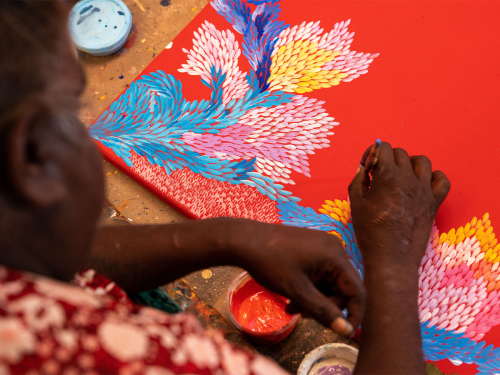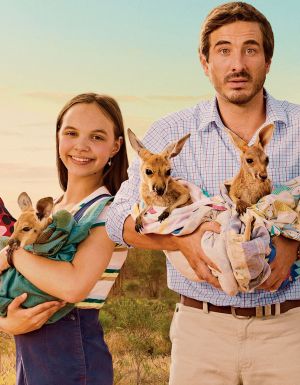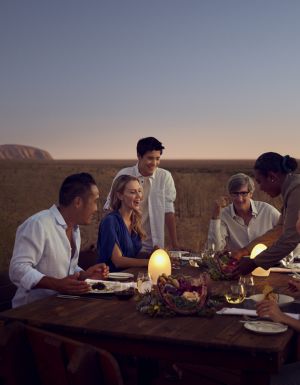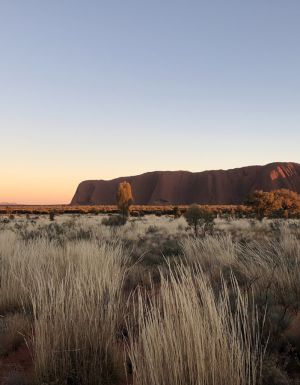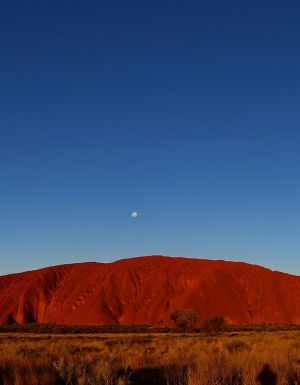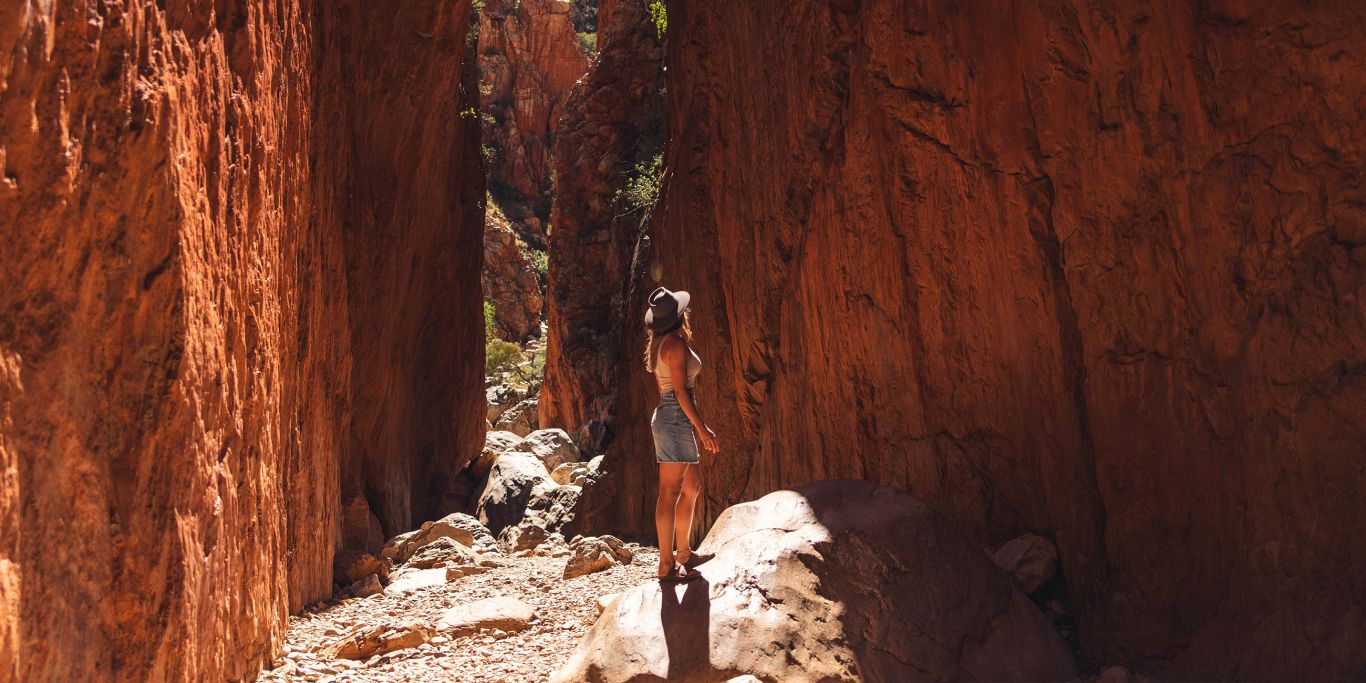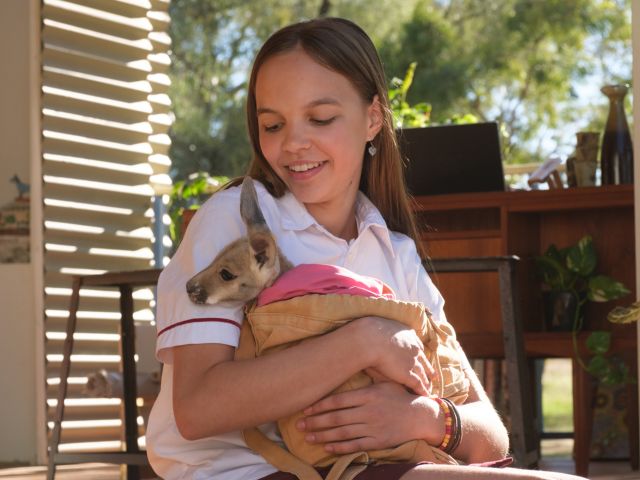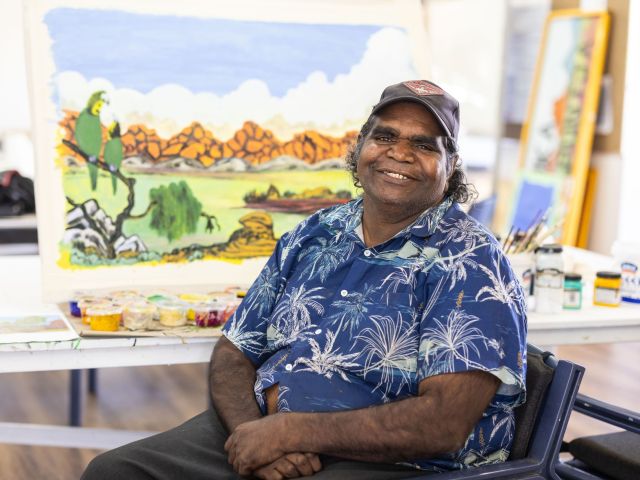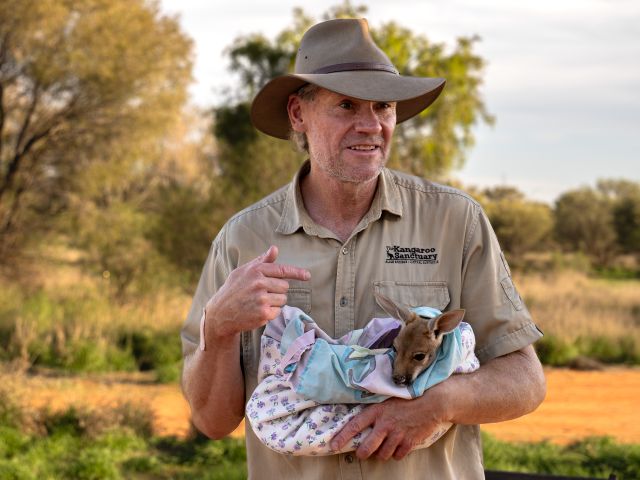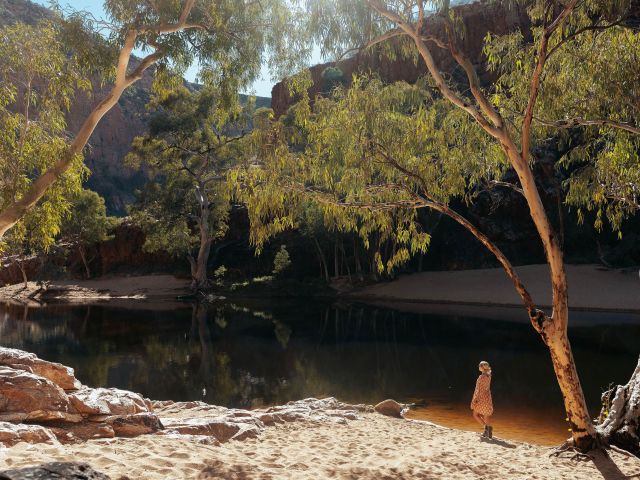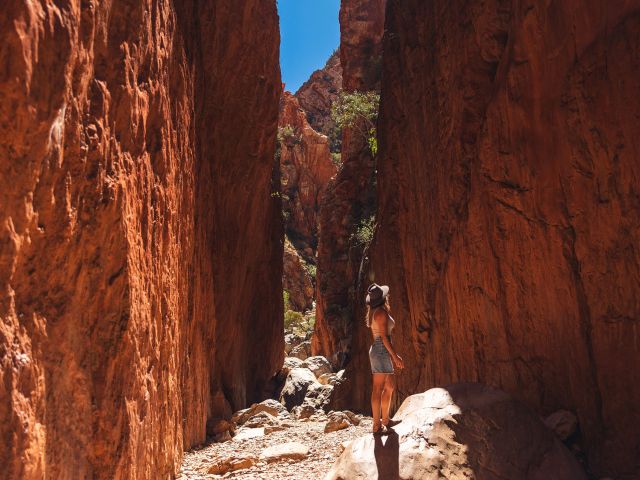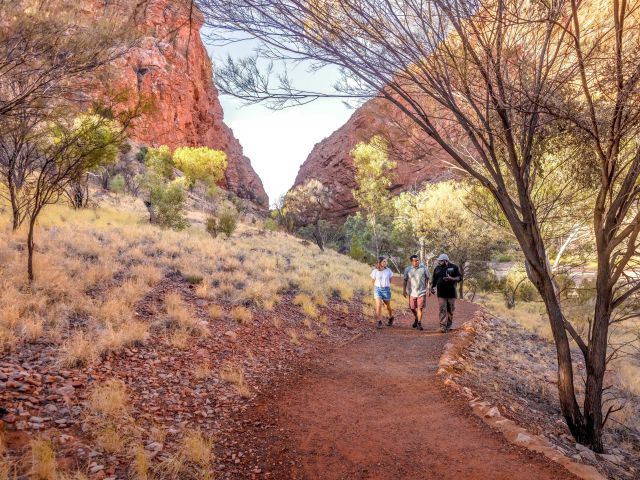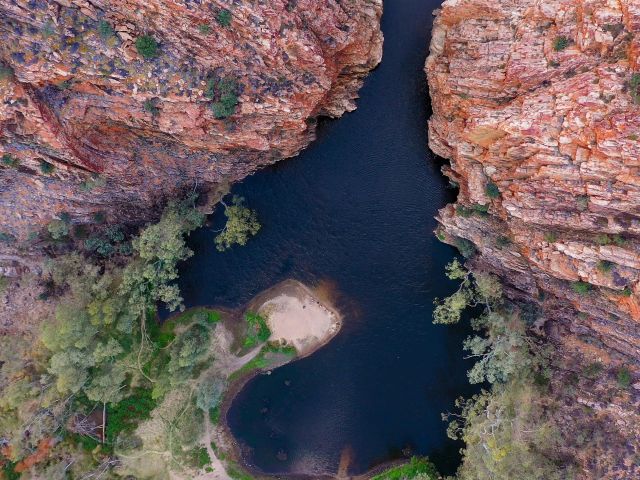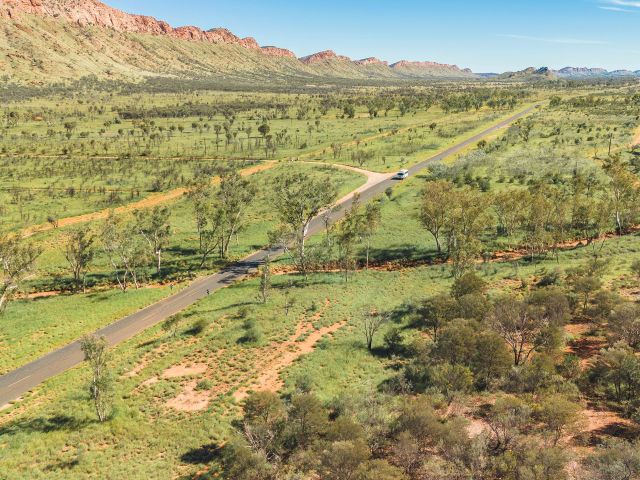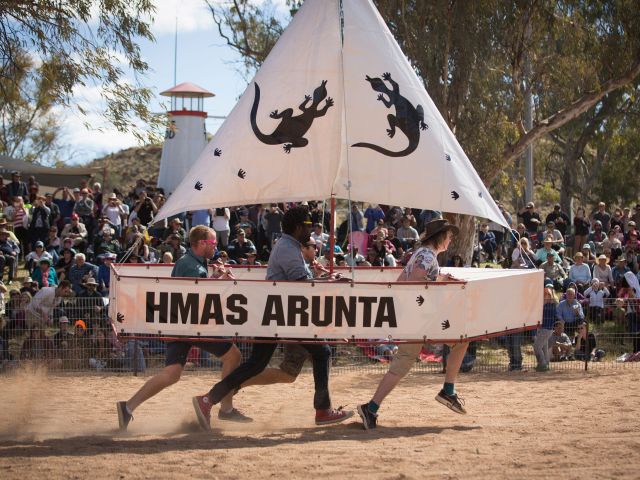The best thing about exploring the Indigenous art trail of the Red Centre can be described in one word: unique.
The geographical heart of Australia contains a myriad of diverse art experiences, from embracing the bulbous colourful pots at Hermannsburg to gazing at paintings with their labyrinth of dots and lines at Papunya, the birthplace of what is considered to be the beginning of contemporary Aboriginal art.
Whether you’re a nature lover looking to step into an Albert Namatjira watercolour with its unmistakeable red dirt and undulations of the West MacDonnell Ranges/Tjoritja or a culture fiend who can’t get enough of city galleries and beanie festivals, the Red Centre has something for you.
Ready to have your socks blown off? Here are the key art destinations to visit in the Red Centre.
The best way to explore the trail
First, get yourself to Alice Springs (Mparntwe) or Uluṟu, both easily reachable by plane from most capital cities in Australia.
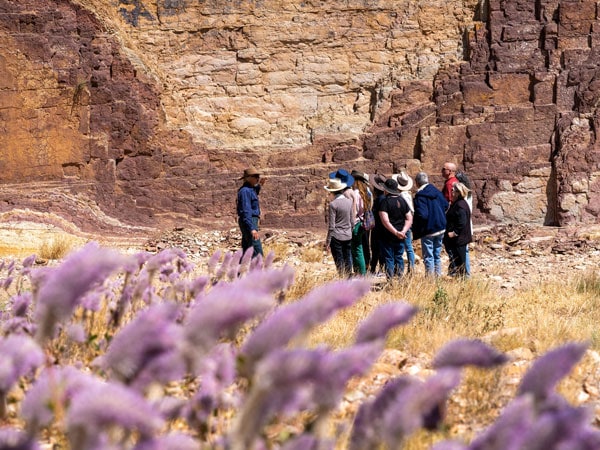
Allow two to three days in the outback city, home to dozens of art galleries, before heading west through the West MacDonnell Ranges/Tjoritja to visit some of Australia’s most remote and remarkable art centres.
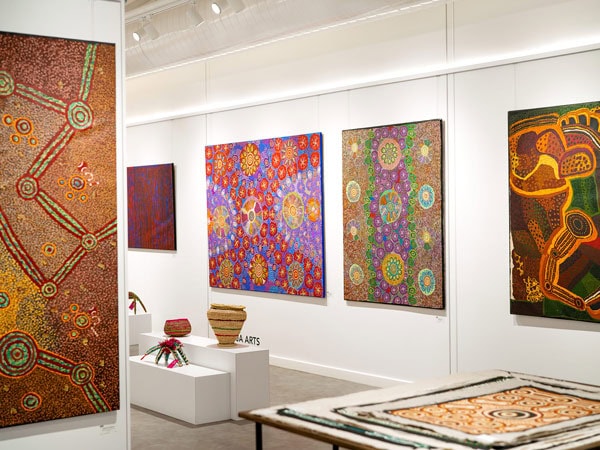
Highlights include galleries at Hermannsburg (Ntaria), Haasts Bluff (Ikuntji) and Papunya and don’t miss squeezing in a stop at the Ochre Pits, about 110km west of Alice Springs, where the Western Aranda people have gathered vivid yellow, red, purple and white ochre for painting and body decoration for thousands of years.
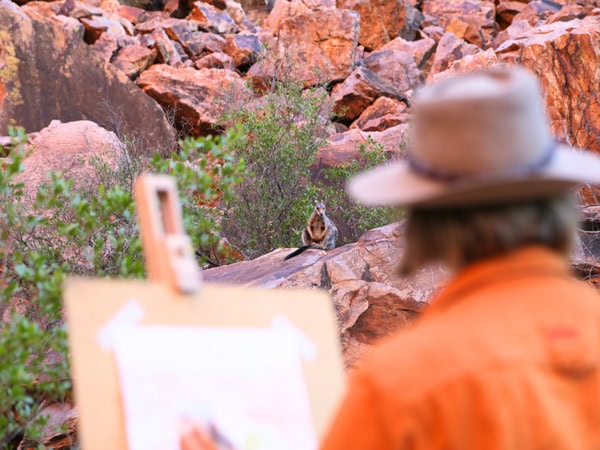
Prefer to take a deep art dive on an organised tour? Artist and guide Anna Dakin of Art Tours of Australia takes guests on jaunts through the Red Centre to either make art or, if you prefer, to buy art. Her 5-day Art and Culture Trip begins in Alice Springs and takes in Uluṟu, where guests participate in an Aṉangu-led dot painting class, before travelling into the West MacDonnell Ranges/Tjoritja.
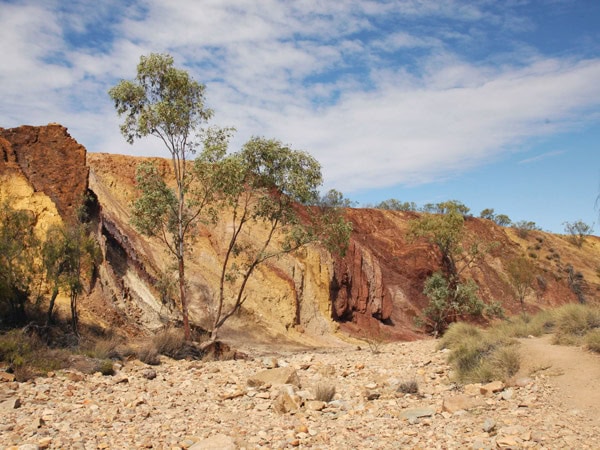
Alice Springs
Home to the Arrernte people, Alice Springs is a treasure chest of Aboriginal art from across Central Australia, offering a lively mix of one-of-a-kind galleries, quirky shops and hidden studios.
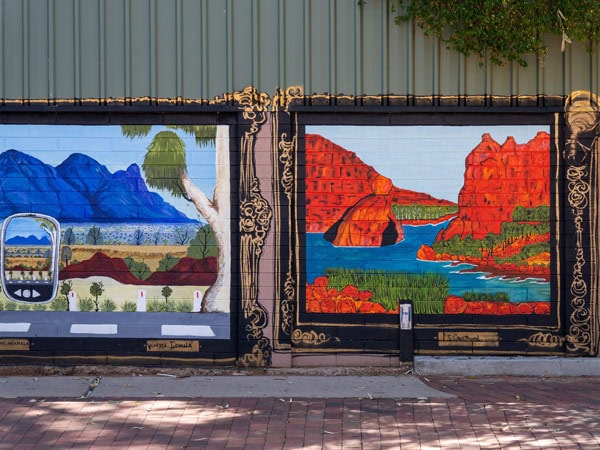
A great spot to kick off your artistic adventure in Alice Springs is the Araluen Arts Centre , home to many famous paintings by Albert Namatjira, including Haasts Bluff Country and Heavitree Gap.
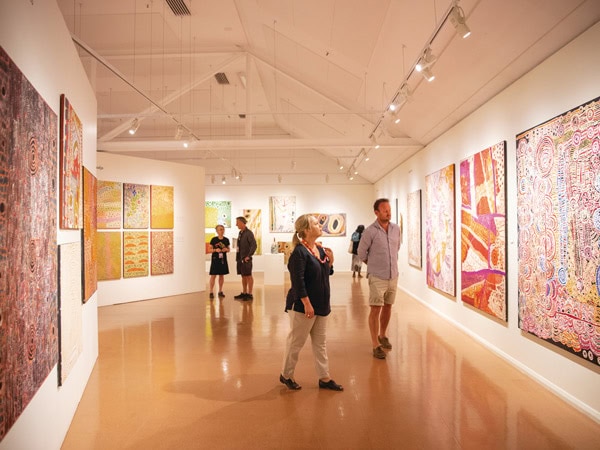
Where else can you see a Namatjira watercolour and then within minutes be amongst the mountainous landscape that inspired him?
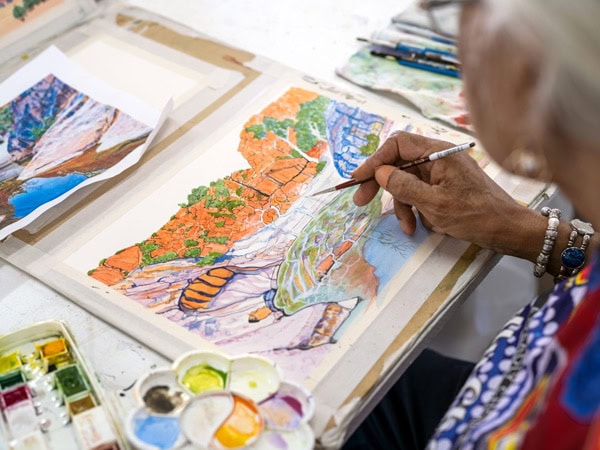
Not far from here, on the edge of the CBD, you’ll find the Iltja Ntjarra Many Hands Art Centre – an essential stop for continuing your journey into Namatjira’s world. This vibrant gallery and working studio is home to the Namatjira artists who carry forward the landscapes made famous by their family member. It’s the perfect place to not only see their stunning creations but also to watch artists at work and have a yarn about their craft.
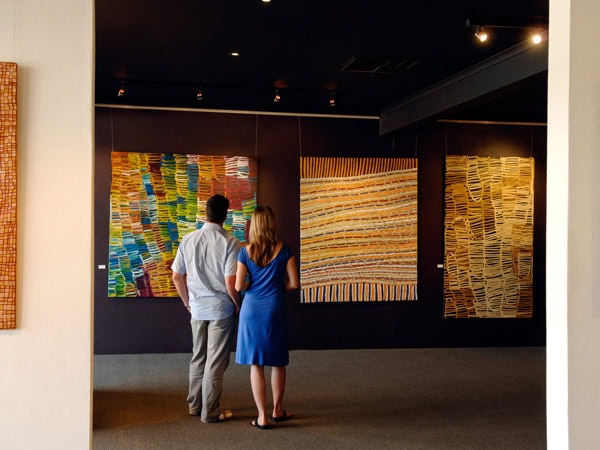
From here, saunter to Todd Mall, where you’ll discover a collection of lively art galleries, cooperatives and shops. Pop into Papunya Tula Gallery , Yubu Napa Art Gallery and Mbantua Gallery to see works by some of Australia’s most celebrated Aboriginal artists.
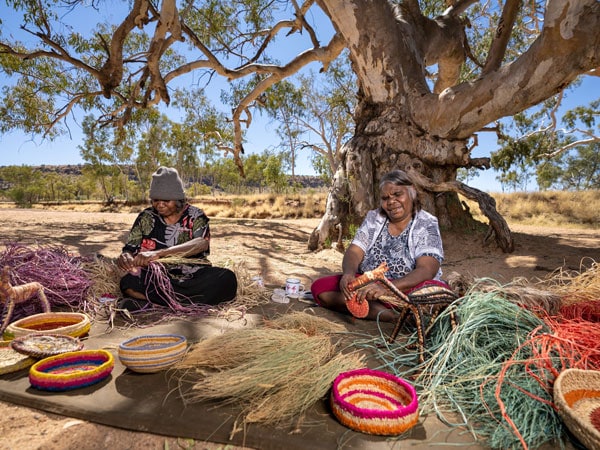
For fans of fibre art, don’t miss Tjanpi Desert Weavers , a unique gallery showcasing intricately woven baskets, earrings and sculptured animals, all crafted by women from the Central and Western desert regions.
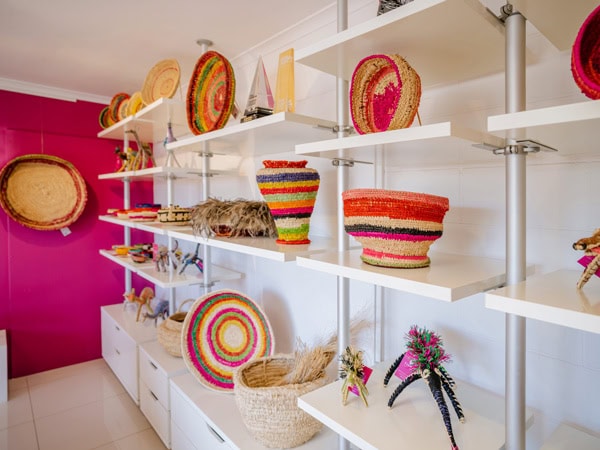
East MacDonnell Ranges
If you’re looking to take your art adventure outdoors, then it’s time to head into nature and discover the ancient rock art that dots the landscape.
There’s no better place to start than the East MacDonnell Ranges, just a short drive from Alice Springs. Start your adventure at Yeperenye/Emily Gap, a picturesque spot in the East MacDonnell Ranges. This site is not only visually stunning, with its striking red rock formations and shady gums, but it’s also home to rock art that depicts the caterpillar dreaming.
Hermannsburg
Hermannsburg is one of the Red Centre’s must-see gems, and it’s easy to understand why – it’s like stepping back in time. This well-preserved former Lutheran mission, founded in 1877, gives you a real sense of history. Just a scenic 130km drive west of Alice Springs, it’s also the birthplace of Arrernte artist Albert Namatjira, who passed away in 1959.
The Hermannsburg Historic Precinct, listed by the National Trust, is a charming cluster of whitewashed, German-style buildings. Here, you’ll find a dining room and bakery that’s now home to a gallery and gift shop.
If you’re planning to visit the Hermannsburg Potters , make sure to call ahead and book your spot before hitting the road. You won’t want to make the trek out there only to find you’ve missed out on seeing these incredible artists in action. The colourful terracotta pots burst with life, each one telling a unique story about the artists’ culture and their connection to Country.
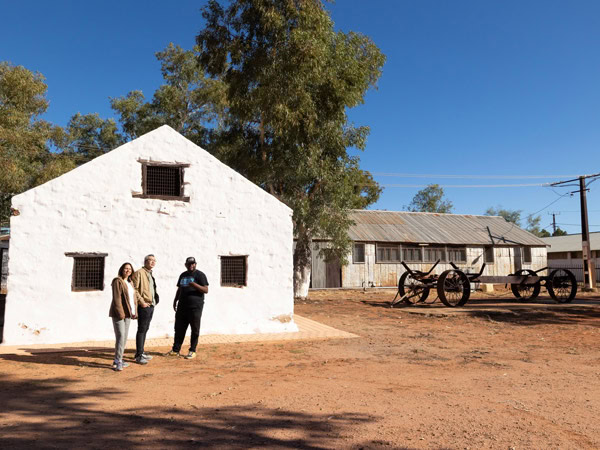
Haasts Bluff
Art lovers, keep your engines running. If contemporary Aboriginal art is your thing, then you won’t want to miss the 230km drive west of Alice Springs to Haasts Bluff. At Ikuntji Artists , you’ll find a dazzling mix of bold paintings, vibrant textiles and eye-catching accessories – all crafted by talented Aboriginal artists.
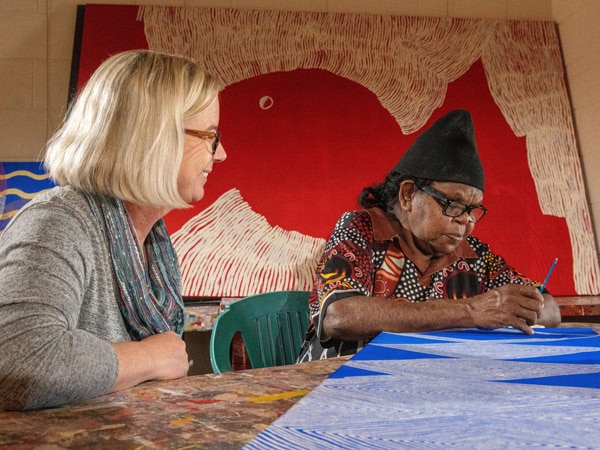
This not-for-profit Aboriginal-owned centre has a fascinating history, starting back in the 1980s when a group of women began painting in the local aged care facility. Since then, it’s blossomed into a hub of creativity, and today, it’s a must-see destination for anyone wanting to experience the heartbeat of the region’s contemporary art scene.
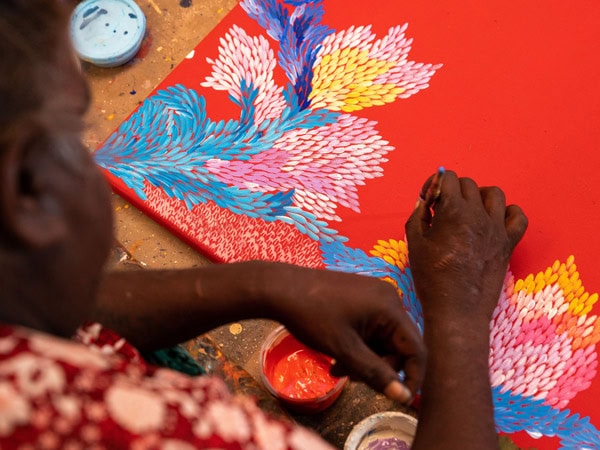
Papunya
Around 250km west of Alice Springs, Papunya is the place that packs a punch in the world of Aboriginal art – it’s the birthplace of the iconic Western Desert dot-painting movement. Today, this artistic legacy lives on through Papunya Tjupi Artists, where over 100 local artists bring their powerful visions to life.
Known for their striking line work and innovative approaches to telling ancient stories, the artists of Papunya Tjupi continue to push boundaries while honouring tradition. If you’re a fan of bold, meaningful art, this is the place to experience it first-hand.
Uluṟu
For an unforgettable art experience, head south from Alice Springs to the iconic Uluṟu, about 450km away, where the desert landscape meets the rich cultural traditions of the Aṉangu people.
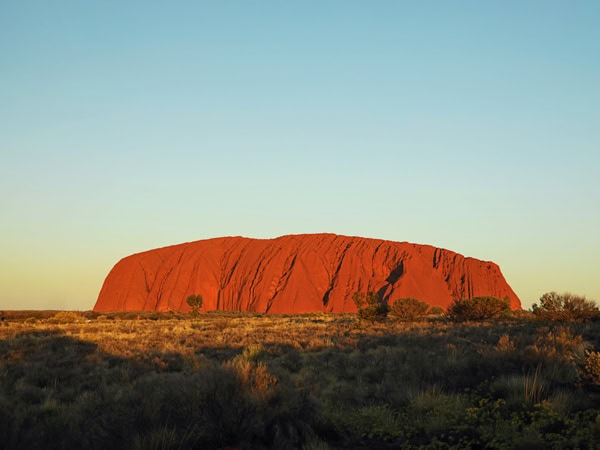
Just a short drive from the rock itself, you’ll find Maruku Arts , a fantastic not-for-profit cooperative run by Anangu artists from over 20 remote communities across the Central and Western deserts.
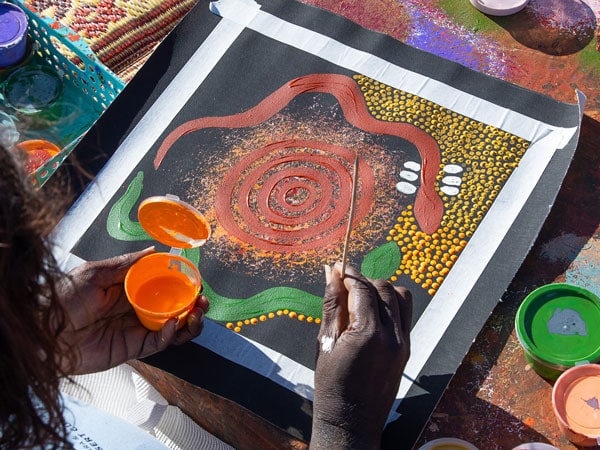
At Maruku, you can dive deep into Aboriginal art and culture – whether it’s through exploring stunning dot paintings or learning about ancient techniques. Even better, you can get hands-on and take part in a dot-painting workshop, where you’ll create your own piece to take home.
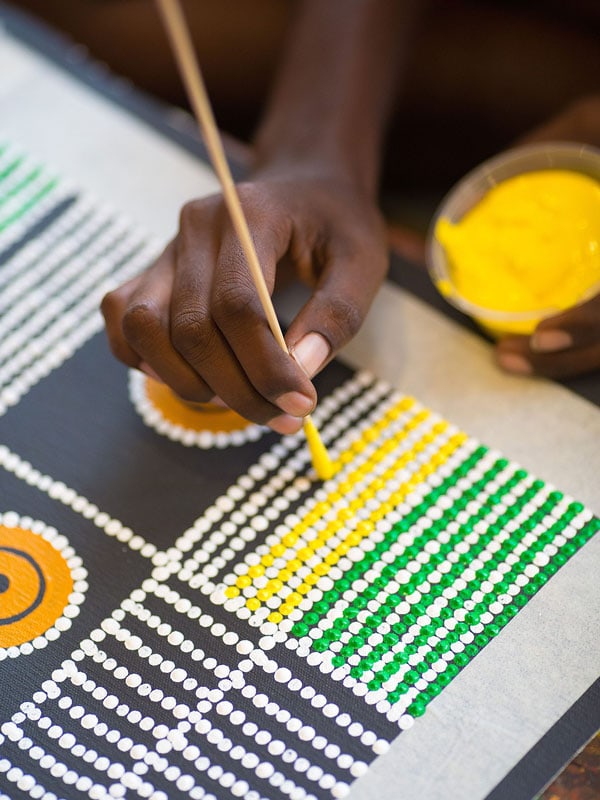
Uluṟu’s striking red rock face is world-renowned, but it’s also a fantastic place to see rock art. Around 80 sites reveal the Anangu people’s Tjukurpa (creation stories) and cultural knowledge, passed down through generations.
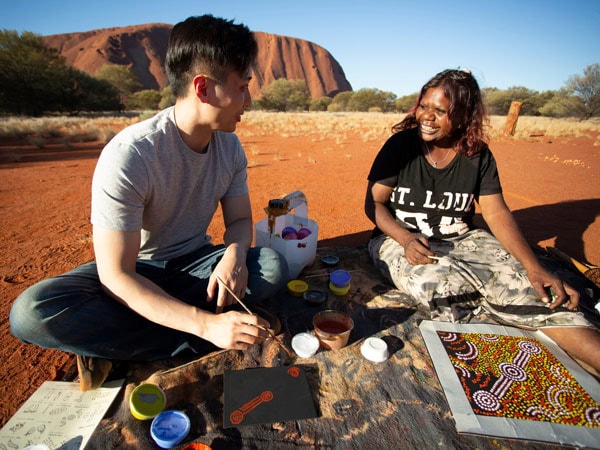
To see these remarkable artworks up close, the best way is on a guided tour along the Mala Walk to Kantju Gorge or the Kuniya Walk to Mutitjulu Waterhole.
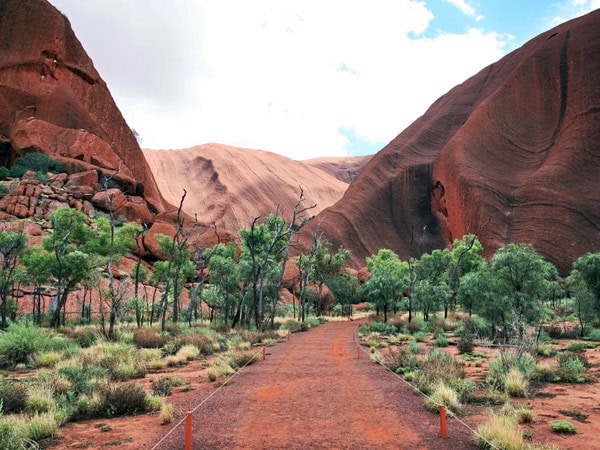
Discover incredible things to do at Uluṟu (that aren’t climbing).


